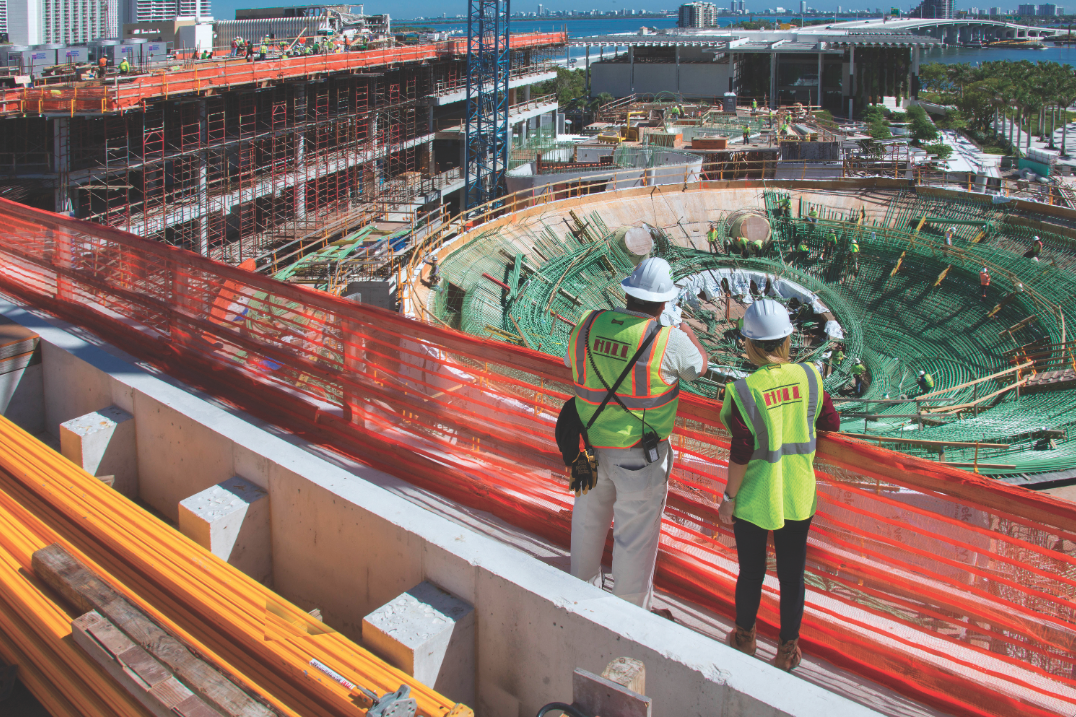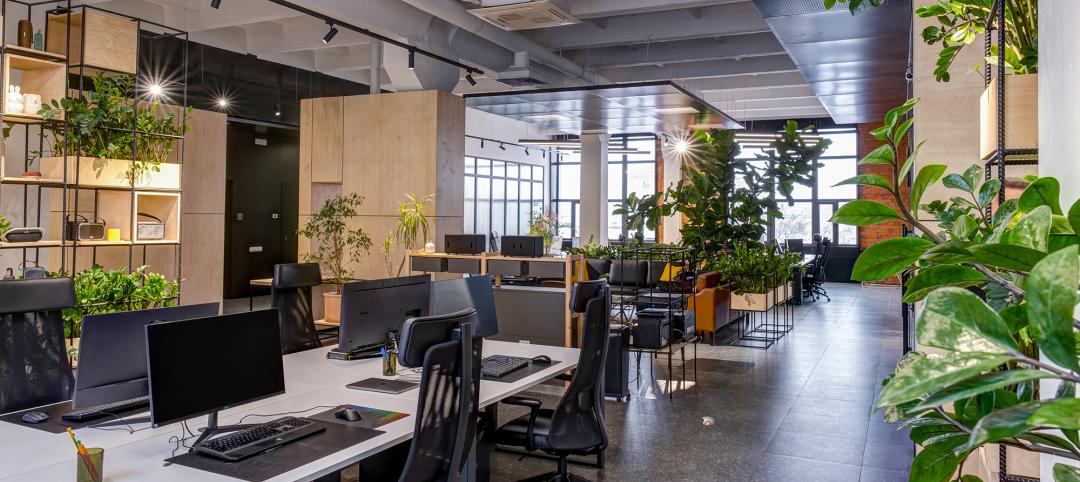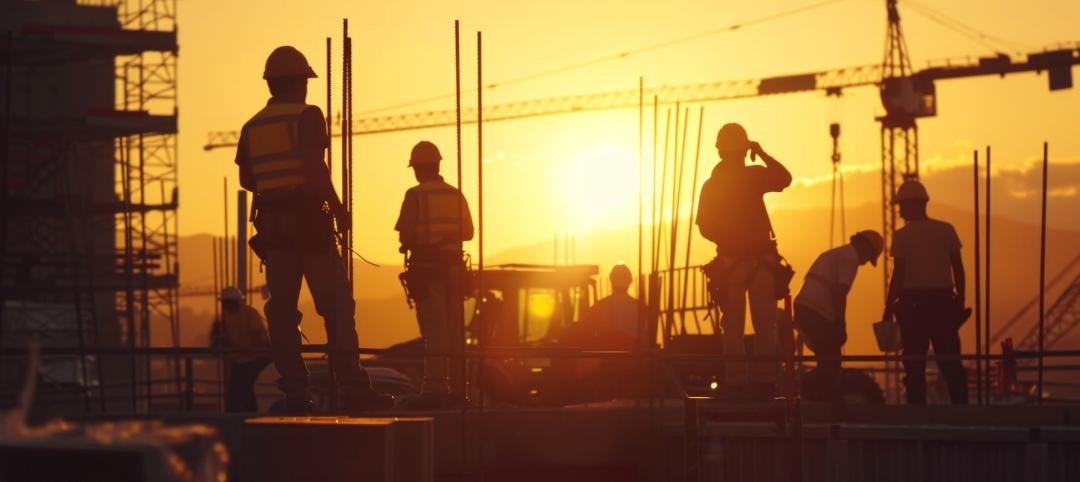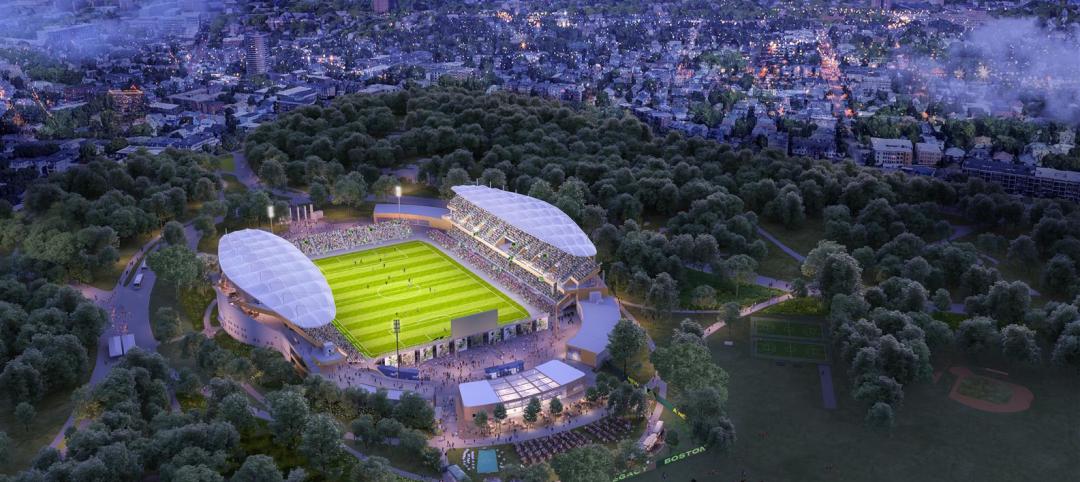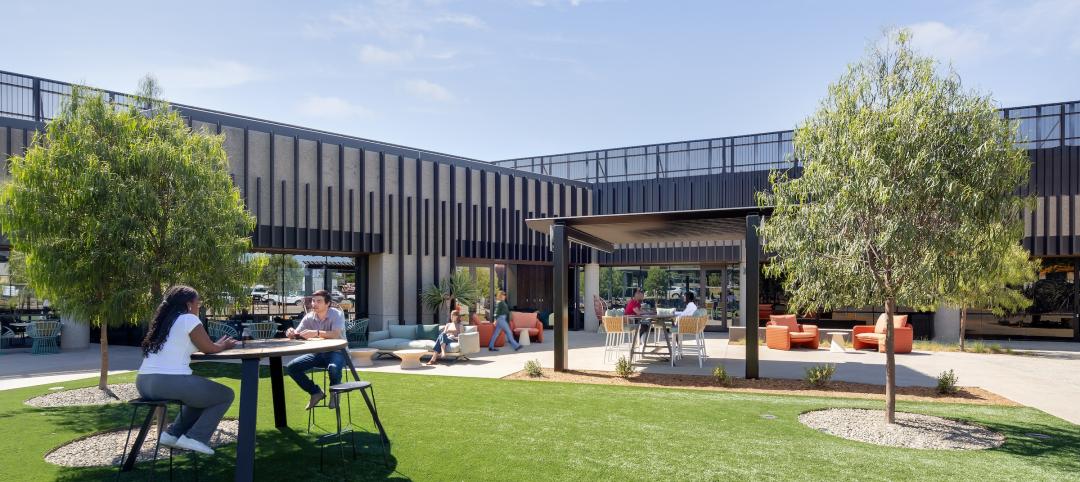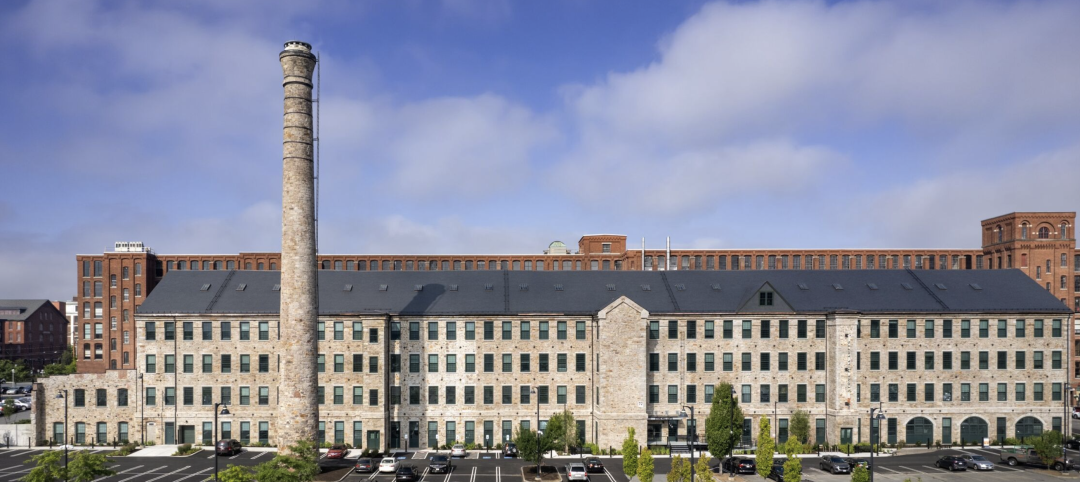Uncertainties about the country’s economic growth, energy prices, and labor wage inflation could have the greatest near-term impact on nonresidential construction spending, according to three leading economists.
Kermit Baker, PhD, of the American Institute of Architects, Alex Carrick of CMD (formerly Reed Construction Data), and Ken Simonson of the Associated General Contractors of America shared their prognostications in a webcast April 30. The next day, the Census Bureau released its estimates for the value of nonresidential construction put in place for March 2015—up 4.7% from the same month a year earlier, to an annualized $611.8 billion.
TOP CONTRACTOR GIANTS
2014 GC Revenue ($)
1. Turner Construction $10,797,472,734
2. Whiting-Turner $5,597,753,589
3. Jacobs $5,113,403,000
4. Skanska USA $4,952,400,044
5. PCL Construction $4,305,526,733
6. Balfour Beatty US $3,959,465,341
7. Gilbane Building Co. $3,632,871,000
8. Structure Tone $3,543,978,000
9. Clark Group $3,036,421,819
10. Lend Lease $2,682,278,000
TOP CM/PM GIANTS
2014 CM/PM Revenue ($)
1. Jacobs $1,621,620,000
2. AECOM $684,032,000
3. Hill International $405,000,000
4. Gilbane Building Co. $172,129,000
5. Turner Construction $151,664,266
6. JLL $150,158,676
7. Structure Tone $122,000,000
8. JE Dunn Construction $115,458,840
9. Flintco $105,300,000
10. WSP | Parsons Brinckerhoff $89,068,351
CONSTRUCTION GIANTS SPONSORED BY:
The trio painted a portrait of an economy that showed healthcare and education sectors, which account for two-thirds of institutional construction spending, still not fully recovered from the Great Recession. They projected lodging, amusement and leisure, and manufacturing to grow faster than construction spending as a whole.
The economists said they expect spending for nonresidential construction to rise in 2015 by somewhere in the 6.4–7.7% range. Construction spending should remain strong in 2016 before tailing off in the following two or three years.
Their expectations of industry projections were less optimistic than those of two construction giants. In its spring 2015 look at construction market conditions, Gilbane predicted nonresidential spending would be up 15.3% this year, even if starts were flat.
In its 2015 construction outlook, which it released in April, design-build and commercial real-estate development firm Leopardo pointed to several factors that could spark construction spending: low oil prices, which are keeping construction costs in check; a rise in public spending as a percentage of GDP, which in 2014 rose for the first time in years; and a downward slope in construction material costs, even for copper, which had risen nearly 73% from 2009 to 2014. Leopardo noted that nonresidential building markups have risen an average 6.6% a year since 2009, with school construction leading the pack.
Spending on education construction—which the Census Bureau estimated was off 3% in March—is one area where Carrick advised caution. He said he expects most of the demand for new construction to come from the lower grades.
Carrick said he was buoyed by economic strength in the high-tech knowledge sector; by the expansion of the Panama Canal, which is spurring development around U.S. tidewater ports; and by live/work mixed-use construction, which he said “is where the action is” on the nonresidential side. Carrick also called out energy extraction, notably shale oil, as a positive sign for the economy.
Simonson agreed that construction is benefiting from “the oil and gas revolution,” the Panama Canal expansion, and the recovery in the residential sector. But he said he’s watching three trends that could upset the apple cart: lower government spending on schools and infrastructure, online shopping’s impact on retail centers, and reductions in office space per employee, particularly in suburban markets.
EARLY WARNING SIGNS OF POTENTIAL THREATS
The economists sought clues from the first few months of 2015 about what track certain sectors might be on. CMD is enthusiastic about the growth in manufacturing construction spending, which Census estimated was up 50.3% YOY in March. Amusement and recreation, another potentially strong growth sector, was up 23.8% in March.
Carrick said he foresees “real growth” in the lodging sector, where spending was up 22% in March and where CMD projects 31% growth for all of 2015. CMD expects annual hotel occupancy rates to stay above 65% through 2017, compared to a 20-year average for 1994–2014 of 61.5%.
Baker’s spending projection—8% growth through 2016—is a bit more aggressive than Carrick’s or Simonson’s. One barometer he points to is the Architecture Billings Index, which is based on results from 750 leading firms. The ABI is “trending up,” he says, and 2015 could exceed 2008’s all-time high.
Baker’s optimism was tempered by an economy that, according to Commerce Department estimates, contracted by 0.7% in the first quarter, when monthly payroll gains were under 200,000. Baker said he also sees “wild cards” like energy prices and interest rates that could spike this year. The “biggest threat” to construction spending, he fears, could be the availability and cost of labor.
Between April 2006 and February 2015, construction employment shrank by 18%, to 6.3 million, with much of that loss on the residential side. A recent AGC poll found that 66% of its members were having trouble finding carpenters, and 43% couldn’t find project managers and supervisors.
The industry’s unemployment levels have been receding, from two million in March 2010, to 800,000 in March 2015. AGC estimates that 41 states and 249 metros added construction employment between March 2014 and March 2015.
So far, labor shortages haven’t translated into higher wages but Simonson said he expects that to change this year and next. Carrick said he’s keeping an eye on labor bottlenecks in other industries, such as last year’s work stoppages by longshoremen and truckers at West Coast ports, to gauge what might happen in construction.
RETURN TO THE GIANTS 300 LANDING PAGE
Related Stories
M/E/P Systems | Oct 30, 2024
After residential success, DOE will test heat pumps for cold climates in commercial sector
All eight manufacturers in the U.S. Department of Energy’s Residential Cold Climate Heat Pump Challenge completed rigorous product field testing to demonstrate energy efficiency and improved performance in cold weather.
MFPRO+ New Projects | Oct 30, 2024
Luxury waterfront tower in Brooklyn features East River and Manhattan skyline views
Leasing recently began for The Dupont, a 41-story luxury rental property along the Brooklyn, N.Y., waterfront. Located within the 22-acre Greenpoint Landing, where it overlooks the newly constructed Newtown Barge Park, the high-rise features East River and Manhattan skyline views along with 20,000 sf of indoor and outdoor communal space.
Resiliency | Oct 29, 2024
Climate change degrades buildings slowly but steadily
While natural disasters such as hurricanes and wildfires can destroy buildings in minutes, other factors exacerbated by climate change degrade buildings more slowly but still cause costly damage.
Hotel Facilities | Oct 29, 2024
Hotel construction pipeline surpasses 6,200 projects at Q3 2024
According to the U.S. Hotel Construction Pipeline Trend Report from Lodging Econometrics, the total hotel pipeline stands at 6,211 projects/722,821 rooms, a new all-time high for projects in the U.S.
Office Buildings | Oct 29, 2024
Editorial call for Office Building project case studies
BD+C editors are looking to feature a roundup of office building projects for 2024, including office-to-residential conversions. Deadline for submission: December 6, 2024.
Healthcare Facilities | Oct 28, 2024
New surgical tower is largest addition to UNC Health campus in Chapel Hill
Construction on UNC Health’s North Carolina Surgical Hospital, the largest addition to the Chapel Hill campus since it was built in 1952, was recently completed. The seven-story, 375,000-sf structure houses 26 operating rooms, four of which are hybrid size to accommodate additional equipment and technology for newly developed procedures.
Contractors | Oct 25, 2024
Construction industry CEOs kick off effort to prevent suicide among workers
A new construction industry CEO Advisory Council dedicated to addressing the issue of suicide in the construction industry recently took shape. The council will guide an industry-wide effort to develop solutions targeting the high rate of suicide among construction workers.
Sports and Recreational Facilities | Oct 24, 2024
Stadium renovation plans unveiled for Boston’s National Women’s Soccer League
A city-owned 75-year-old stadium in Boston’s historic Franklin Park will be renovated for a new National Women’s Soccer League team. The park, designed by Fredrick Law Olmsted in the 1880s, is the home of White Stadium, which was built in 1949 and has since fallen into disrepair.
Laboratories | Oct 23, 2024
From sterile to stimulating: The rise of community-centric life sciences campuses
To distinguish their life sciences campuses, developers are partnering with architectural and design firms to reimagine life sciences facilities as vibrant, welcoming destinations. By emphasizing four key elements—wellness, collaboration, biophilic design, and community integration—they are setting their properties apart.
Adaptive Reuse | Oct 22, 2024
Adaptive reuse project transforms 1840s-era mill building into rental housing
A recently opened multifamily property in Lawrence, Mass., is an adaptive reuse of an 1840s-era mill building. Stone Mill Lofts is one of the first all-electric mixed-income multifamily properties in Massachusetts. The all-electric building meets ambitious modern energy codes and stringent National Park Service historic preservation guidelines.


